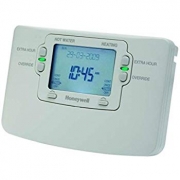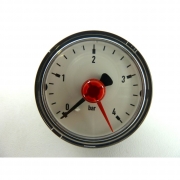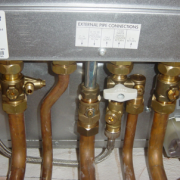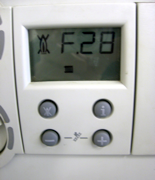1.OIL SUPPLY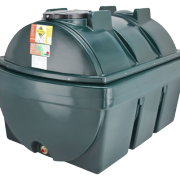 Check your oil tank to see whether you have run out of oil. If you have run out the boiler will have “locked out” but do not try and reset with no oil!! If you have run out of oil you will need to call an OFTEC engineer as the oil supply will need bleeding and the appliance checked to see if it’s running ok once reset. Make sure you have oil delivered before calling an engineer out to your property.
Check your oil tank to see whether you have run out of oil. If you have run out the boiler will have “locked out” but do not try and reset with no oil!! If you have run out of oil you will need to call an OFTEC engineer as the oil supply will need bleeding and the appliance checked to see if it’s running ok once reset. Make sure you have oil delivered before calling an engineer out to your property.
2. HEATING CONTROLS
Check your programmer/timeclock to see if it’s on and a power cut hasn’t reset the timings/settings. Check your room thermostat is turned up. If you have a digital timeclock and there is no display or lights on, check to see whether one of your electrical circuits has tripped at the consumer unit/fuse board
3. BOILER PRESSURE
If you have a pressure gauge on your boiler or heating system, check the pressure. Some gauges have two needles; the red one is a marker and the black one is the actual system pressure. The pressure should be between 1-2 bar. If the pressure has dropped below this it will need topping up by either the external filling loop or a filling loop inside your boiler casing. If you are unsure check your boiler manufacturer’s instructions. If the boiler pressure drops regularly (more than twice a year) there is a problem, you will need to call a professional as it will be detrimental to the health of your boiler and heating system to keep topping up the pressure on a regular basis

Filling loop
4. Boiler lockout
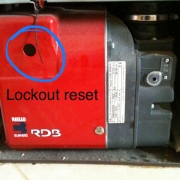
If your boiler has gone into lockout it prevents the boiler from firing. There is usually an indicator light of some description either on the boiler display or the oil burner itself to show whether the boiler has “locked out”. The manufacturers instructions will describe how to check if your boiler has “locked out” and the reset procedure. NEVER reset a lockout more than twice in a row, if you have reset twice and the boiler still hasn’t fired then you will need to call an OFTEC engineer to investigate the cause of the problem.
5. FROZEN CONDENSATE
If the condensate pipe (a white plastic drain pipe which is connected to the boiler) runs externally it may have frozen if you have been experiencing freezing weather conditions. To thaw out the pipework pour lots of warm water (not boiling as this might crack the pipe) over the external pipe. You may also have to reset the boiler once it has thawed, if so see point 4. and check the manufacturers instructions. If the condensate pipe has frozen then it might be inadequately sized or require insulating please seek the advice of a professional.
If you have been through all of the above steps and your boiler still isn’t working

